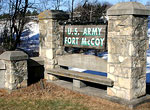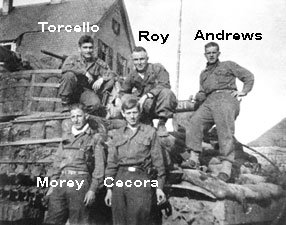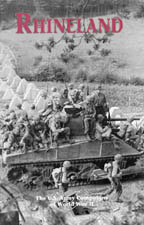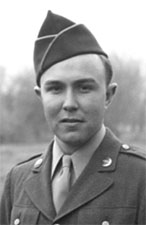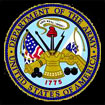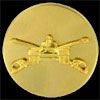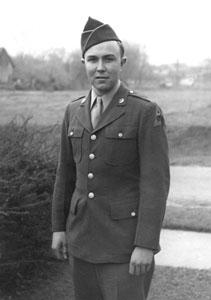| North
High School Wall of Honor Lee Junior Roy Class of June, 1943 |
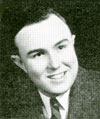 |
||||||||||||||||||||||||||||||||||||||||||||||||||||||||||||||||||||||||||||||||||||||||||||||||||||||||||||||||||||||||||||||||||||||||||||||||||
| Research done by Claradell Shedd, Class of 1953. | |||||||||||||||||||||||||||||||||||||||||||||||||||||||||||||||||||||||||||||||||||||||||||||||||||||||||||||||||||||||||||||||||||||||||||||||||||
| Lee Junior Roy | |||||||||||||||||||||||||||||||||||||||||||||||||||||||||||||||||||||||||||||||||||||||||||||||||||||||||||||||||||||||||||||||||||||||||||||||||||
| Lee was a member of North High's class of June, 1943. His next of kin were listed as Mr. Lee Roy, 3918 Columbia Street, Des Moines, IA. Lee's service number was 37676190. | |||||||||||||||||||||||||||||||||||||||||||||||||||||||||||||||||||||||||||||||||||||||||||||||||||||||||||||||||||||||||||||||||||||||||||||||||||
|
|||||||||||||||||||||||||||||||||||||||||||||||||||||||||||||||||||||||||||||||||||||||||||||||||||||||||||||||||||||||||||||||||||||||||||||||||||
| *Camp Campbell,
KY The site for Camp Campbell was selected on July 16, 1941, and the Title I Survey was completed November 15, 1941, coincidentally the same time the Japanese Imperial Fleet was leaving Japan home waters for Pearl Harbor, with construction beginning January 12, 1942. Within a year, the reservation designated as Camp Campbell was developed to accommodate one armored division and various support troops, with a total size of 102,414 acres (414 km2), and billets for 2,422 officers and 45,198 enlisted personnel. Due to its close proximity to Clarksville, Tennessee, the War Department on March 6, 1942, designated Tennessee as the official address of the new camp. This caused a great deal of confusion, since the Headquarters was in Tennessee and the post office was in Kentucky. After many months of mail delivery problems, Col Guy W.Chipman requested that the address be changed to Camp Campbell, Kentucky. The War Department officially changed the address on September 23, 1942. Early in the summer of 1942, the post's initial cadre, one officer and 19 enlisted men, arrived from Fort Knox, Kentucky. From that time until the end of World War II, Camp Campbell was the training ground for the 12th, 14th and 20th Armored divisions, Headquarters IV Armored Corps and the 26th Infantry Division. In the spring of 1949, the 11th Airborne Division arrived at Campbell following occupation duty in Japan. The 11th was in residence there until early 1956. By April 1950, the post had evolved from a wartime training camp to a permanent installation and was renamed Fort Campbell. ***Marseille, France The 14th Armored Division landed at Marseille, France, 29 October 1944. Within 2 weeks some of its elements were in combat, maintaining defensive positions along the Franco-Italian frontier. The division was assigned to U.S. 6th Army Group on 1 November. On 10 November, the division was assigned to U.S. Seventh Army. On 12 November Combat Command Reserve was detached, and ordered to the Maritime Alps by 6th Army Group to relieve units in defensive positions there. On 15 November, Combat Command A moved north from the area of Marseilles to Epinal to take part in the VI Corps drive through the Vosges Mountains, and was followed by Combat Command B five days later. Hard fighting at Gertwiller, Benfeld, and Barr helped VI Corps crack the German defenses, and the division was on the Alsatian Plain early in December. On 17 December the division attacked across the Lauter River into Germany itself, and along with the other units of VI Corps fought its way into a heavily defended portion of the German Westwall. Due to the growing crisis in the Ardennes, General Eisenhower ordered Seventh Army to stop its attack and withdraw from the Westwall, where its units assumed positions south of the Lauter River. The order was poorly timed as elements of the 14th Armored Division had penetrated deep into the German defenses, and were poised to break out into the enemy's rear. On 25 December 1944 VI Corps ordered the division's Combat Command R, commanded by Col. Daniel Hudelson, to assemble a regimental sized task force (TF Hudelson) to establish defensive positions along a 10-mile section of the Seventh Army line located in the rugged Vosges Mountains in the area of Banstein, southeast of Bitche. TF Hudelson consisted of the division's 62nd Armored Infantry Battalion, 94th Cavalry Reconnaissance Squadron, and one company of the 125th Armored Engineer Battalion. TF Hudelson was further reinforced by two VI Corps units, the 117th Cavalry Reconnaissance Squadron and the 1st Battalion, 540th Combat Engineers. Just before midnight on New Year's Eve, 1944 the German Army Group G launched Operation Nordwind, the last major German counter-offensive of the war. During the night and day of 1 January, TF Hudelson found itself engaged by elements of 5 enemy divisions, but managed to delay and slow the German advance until substantial reinforcements could arrive and stem the German advance. The major fighting between 1 January and 8 January occurred in the Vosges Mountains, and two combat commands of the division were in almost continuous action defending against the German attacks. With the failure of his attack in the Vosges, the enemy attempted to break through to Hagenau and threaten Strasbourg and the Saverne Gap by attacks at Hatten and Rittershoffen, two small villages located side by side on the Alsatian Plain. However, this, the strongest attack of Operation Nordwind, was halted by the 14th Armored in the fierce defensive Battle of Hatten-Rittershoffen which raged from 9 January to 21 January 1945. On 21 January, after the rest of Seventh Army had withdrawn to new defensive positions on the south bank of the Moder River, the 14th and its supporting units withdrew from Hatten and Rittershoffen and moved south to join the rest of the army. ****Erding, Germany Erding is a town in Bavaria, Germany, and capital of the district Erding. Erding is located around 45 kilometers northeast of central Munich, about a 40-minute drive by car. *****I.G. Farben Building; Frankfurt, Germany The IG Farben Building or the Poelzig Building was built from 1928 to 1930[1] as the corporate headquarters of the IG Farben conglomerate in Frankfurt am Main, Germany. It is also known as the Poelzig Ensemble or Poelzig Complex, and previously as the IG Farben Complex, and the General Creighton W. Abrams Building. A competition to design the building was won by the architect Hans Poelzig. After WWII, the IG Farben Building served as the headquarters for the Supreme Allied Command and from 1949-1952 the High Commissioner for Germany (HICOG). It became the principal location for implementing the Marshall Plan, which largely financed the post-war reconstruction of Europe. The state apparatus of the Federal German Government was devised there. The IG Farben Building served as the headquarters for the US Army's V Corps and the Northern Area Command (NACOM) until 1995. The US Army renamed the building the General Creighton W. Abrams Building in 1975. ******Camp Shanks, NY Camp Shanks, named after Major General David Carey Shanks (1861 - 1940) was a United States Army installation in and around Orangeburg in the Town of Orangetown, New York (near Nyack, NY). Situated near the juncture of the Erie Railroad and the Hudson River, it served as a point of embarkation for troops departing overseas during World War II. Dubbed “Last Stop USA,” the camp housed about 50,000 throops spread over 2,040 acres (8.3 km2) and was the largest World War II Army embarkation camp, processing 1.3 million service personnel including 75% of those participating in the D-Day invasion. |
|||||||||||||||||||||||||||||||||||||||||||||||||||||||||||||||||||||||||||||||||||||||||||||||||||||||||||||||||||||||||||||||||||||||||||||||||||
|
|||||||||||||||||||||||||||||||||||||||||||||||||||||||||||||||||||||||||||||||||||||||||||||||||||||||||||||||||||||||||||||||||||||||||||||||||||
|
|||||||||||||||||||||||||||||||||||||||||||||||||||||||||||||||||||||||||||||||||||||||||||||||||||||||||||||||||||||||||||||||||||||||||||||||||||
|
|||||||||||||||||||||||||||||||||||||||||||||||||||||||||||||||||||||||||||||||||||||||||||||||||||||||||||||||||||||||||||||||||||||||||||||||||||
|
|||||||||||||||||||||||||||||||||||||||||||||||||||||||||||||||||||||||||||||||||||||||||||||||||||||||||||||||||||||||||||||||||||||||||||||||||||
|
|||||||||||||||||||||||||||||||||||||||||||||||||||||||||||||||||||||||||||||||||||||||||||||||||||||||||||||||||||||||||||||||||||||||||||||||||||
|
|||||||||||||||||||||||||||||||||||||||||||||||||||||||||||||||||||||||||||||||||||||||||||||||||||||||||||||||||||||||||||||||||||||||||||||||||||
|
|||||||||||||||||||||||||||||||||||||||||||||||||||||||||||||||||||||||||||||||||||||||||||||||||||||||||||||||||||||||||||||||||||||||||||||||||||
| 11/24/10. Living in Des Moines, IA. | |||||||||||||||||||||||||||||||||||||||||||||||||||||||||||||||||||||||||||||||||||||||||||||||||||||||||||||||||||||||||||||||||||||||||||||||||||
| Music: "Wind Beneath My Wings" | |||||||||||||||||||||||||||||||||||||||||||||||||||||||||||||||||||||||||||||||||||||||||||||||||||||||||||||||||||||||||||||||||||||||||||||||||||
| Home
|
Back/allyears |
WWI |
WWII |
Korea |
Vietnam |
Afghanistan/Iraq |
Lyrics
|
Refs/Awards |
Contact ©2025-csheddgraphics All rights reserved. All images and content are © copyright of their respective copyright owners. |
|||||||||||||||||||||||||||||||||||||||||||||||||||||||||||||||||||||||||||||||||||||||||||||||||||||||||||||||||||||||||||||||||||||||||||||||||||


